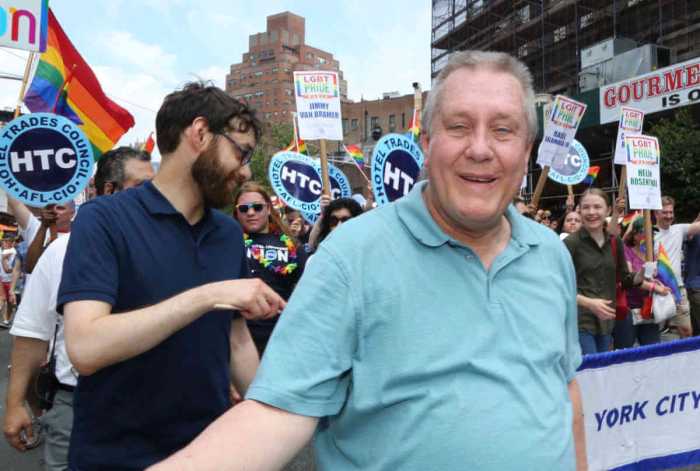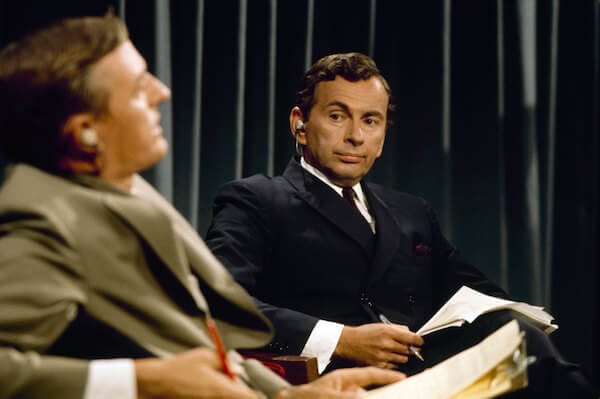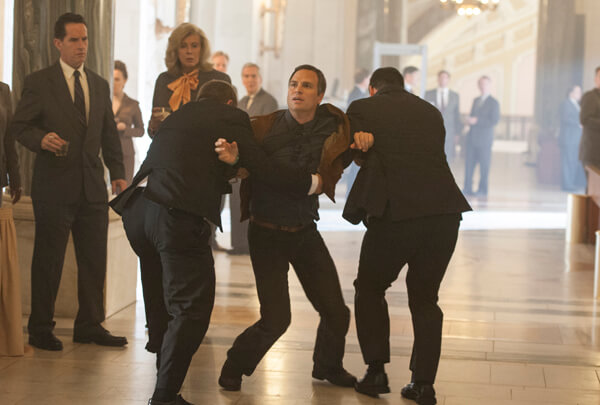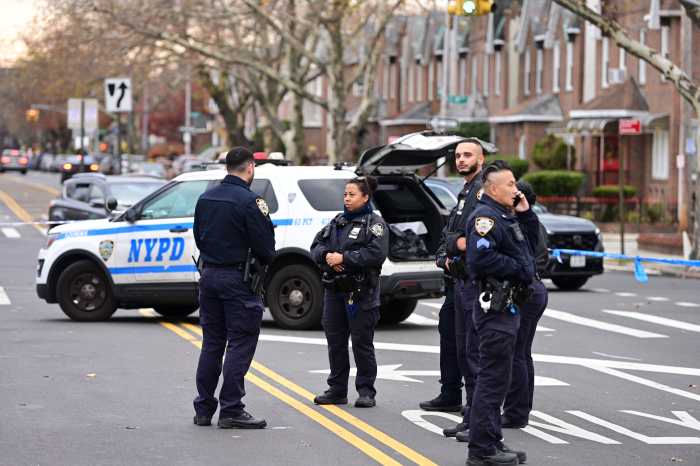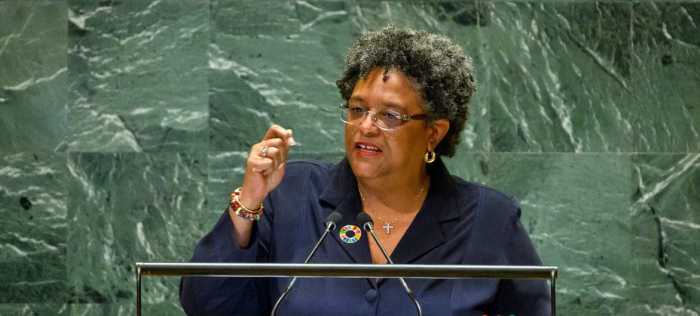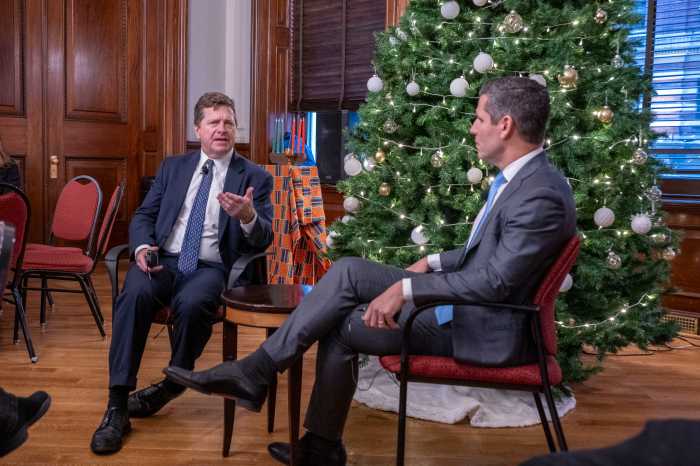“Bisexuality immediately doubles your chances for a date on Saturday night.” So joked Woody Allen back in the day. That was almost as glib as Mike Nichols’ similarly “classic” quip that “homosexuality used to be the ‘the love that dare not speak its name’ — and now it won’t shut up.” These old chestnuts are worth recalling in light of “Avedon: Some-thing Personal,” an oral history of the great photographer’s life and work by Steven M.L. Aronson in conversation with Avedon’s studio director Norma Stevens. Its major revelation is Richard Avedon’s seven-year love affair with Nichols.
That the peerlessly sophisticaed photographer and the indubitably ingenious stage and screen director were close friends is surely no surprise. They would have tons to say to one another. But that many of their conversations took the form of pillow talk puts a whole new light on their relationship.
“We had so much going for us,” Avedon recalls. “He’s above me intellectually of course, the way Renata [Adler, the writer and sometime girlfriend of Avedon] is, but I’m the artist so it evens out. And we’re equally corrupt. We were made for each other. At one point we even thought about running away together. Eloping, we called it — leaving our wives and our lives and moving to Gay Paree. I was the one who introduced Mike to Paris, that time when we shot the collections for the Bazaar — he loved it as much as me. We chickened out, but we were together for years, ‘til Mike met someone else and moved on — someone not worthy of him I might add. Later on we started things up again — there were sparks, but no fire. But we stayed best friends.And we’ll always have Paris.”
Avedon and Nichols, sheep and goats, and “whatever”
Now isn’t that something? A gay version of “Funny Face” with Mike Nichols in the Audrey Hepburn role. That classic movie musical billed Avedon as “special visual consultant,” but quite obviously he had as much if not more more to do with it on every level than director Stanley Donen. Having his idol Fred Astaire play a version of his public self was a special treat for him. A lot of the “Funny Face” spirit is evident in a series of pictures (a “photo-roman”) Avedon took for Harper’s Bazaar of Nichols with one of his favorite models, Suzy Parker, as a pair of sophisticates traipsing across Europe.
The better part of Nichols’ life was devoted to such comic sophistication, starting with the legendary act he did with Elaine May. It was a collaboration of the mind rather than the heart or body that continued on and off for years after the initial comedy act skyrocketed them to fame. The act broke up and they went their separate ways, but stayed in touch so that a considerable number of years later they “reconciled” through two films she wrote and he directed, “The Bird Cage” (1996) and “Primary Colors” (1998). “Bird Cage,” an adaptation of the French farce “La Cage aux Folles” (1978), centered on gay characters but no special knowledge of gayness was required for such a lightweight project and bisexuality played no role in it at all.
The same can’t be said of Nichols’ masterful 2003 HBO adaptation of Tony Kushner’s epic play “Angels in America,” in which gay and bisexual characters dominate, with considerable light shed on their lives and the life of America at the height of the AIDS crisis. As for his own “bi-curiousness” Nichols is found in “Something Personal” to be treading softly: “I hesitate to talk deeply about Dick, because what’s ours, his and mine, when all is said? Is nothing just ours?”
But considering the Avedon-Nichols affair outside of the “particular” and relating it to bisexuality “in general” requires first a quick trip to the good Dr. Alfred C. Kinsey, who in his famous 1948 “Sexual Bevaior in The Human Male” put it bluntly: “Males do not represent two discrete populations, heterosexual and homosexual. The world is not to be divided into sheep and goats. It is a fundamental of taxonomy that nature rarely deals with discrete categories.” To address the lack of such a binary, Kinsey created his famous “scale,” registering same-sex activity from an infrequent “1” to an exclusive “6.”
What that meant, of course, was that what we refer to as “bisexuality” is in fact simply “the human condition” itself. Needless to say the culture Kinsey was doing his best to serve did not cotton to this appraisal, preferring instead a rigid separation of the “sheep” from the “goats.” Society largely assumes that most people devote themselves to the pursuit of one gender or another, putting one in either the gay or straight camp, despite the fact that this isn’t the way the world always works. In fact, many Kinsey “6’s” find amusement, even today, in encounters with those they view as “bi today, gay tomorrow,” assuming that their partner is utlizing bisexuality as a cover or what Roland Barthes would call a “structuring absence” of gayness.
But bisexuality is real, accounting for those whose pursuits vary from one gender to another over the course of a lifetime. Think of Laurence Olivier, John Osborne, Marlene Dietrich, John Cheever, Burt Lancaster, Alan Bates, Nicholas Ray, and Jacques Demy, bisexuals all — with Demy going totally gay in his last years. Joe Dallesandro has openly declared himself to be bisexual, as did David Bowie (primarily in the early yeas of his fame) and Dominick Dunne (primarily in the later years of his). Marlon Brando was famously bisexual — bedding James Dean among others including, it was recently revealed, Richard Pryor, the legendary comedian who famously told an audience of gays at an AIDS benefit that they could “kiss my ass!” One imagines he enjoyed kissing Brando’s. When Hakim Jamal, a follower of Malcolm X, asked James Baldwin, “Are you a homosexual?,” the great man replied, “No I’m bisexual, whatever that means.”
“Whatever” has figured more recently with Charlie Sheen and Robert Downey, Jr., who had their bi escapades but have never been voluable about them. Sheen has recently been outed by the National Enquirer whereas Downey, back when his heavy drug use led to periodic arrests, insisted on being incarcerated in the “gay section” of Southern California prisons.
Still, such “celebrity scandals” aren’t the best way to regard the B in the acronym. Consider Gore Vidal, who while having far more relationships with men than women insisted on not only regarding himself as bisexual for the very reasons set out by Kinsey, but declared that all human sexuality must be seen that way.
“There is no such thing as a homosexual person,” he grandly decreed — even though as the creator of “Myra Breckinridge” he had authored the most sublime piece of camp since the heyday of Ronald Firbank and E.F. Benson.
About gayness, Avedon is quoted at one point in his life saying, “I screwed up enough courage to go to one of George Cukor’s ‘boys nights.’ The minute I walked in the door I had an attack of what Auden called ‘HP’ — homosexual panic — and ran out.” Obviously “la vie gay” con brio was not for him.
According to “Something Personal,” Avedon’s bisexuality was no state secret. His first wife, Dorcas Nowell, whom he met when she was a 19-year-old bank teller and modeled for him (as Doe Avedon), was married to him from 1944 to 1949. They summered in Cherry Grove on Fire Island. You do the math. In 1951, he married a woman named Evelyn Franklin, who left him shortly atter the birth of their son, John. She died in 2004, the same year as Avedon.
Mike Nichols was married four times — to his first wife, singer Patricia Scott, from 1957 to 1960, and his second, Margot Callas, from 1963 to 1974, producing a daughter Daisy. Wife number three, Annabel Davis-Goff, married Nichols the following year and their alliance lasted through 1986 and saw the birth of two chidren, Max and Jenny. Then, in 1988, he married telejournalist Diane Sawyer and was still with her at the time of his death in 2014.
Avedon’s art was that of ineffably glamour. Though he took up more “serious” photography in his later years, more than a touch of the “unserious” remained, as in a portrait of Oscar Levant in his last years that’s both honest and bouyant.
Photographer, adventurer, and Kinsey “0” Peter Beard (one of the great beauties of the 20th century) notes that Avedon never slept with any of his models whereas he, Beard, did. “Sexuality is the only truth,” he declares.
But is it?
Sex played a role in the creative lives of both Richard Avedon and Mike Nichols. Very obviously so in Avedon’s case. His work overflows with both women and men dispayed at their most erotically elegant. With Nichols less so. A number of years ago I interviewed the great Anne Bancroft, and of course discussed her performance as the rapacious Mrs. Robinson in Nichols’ “The Graduate.” “Make it sexier,” he told her at one point. And picking up on the cues he’d offered about the way he saw her character, she said “Oh you mean angrier.” And he did.
Sex as an expression of anger is a world away from the soignee sensuality of Avedon. But for Mike Nichols was “angry” sexuality the “only truth” that Peter Beard speaks of? Perhaps. Far better it be seen in stylistic terms — Avedon light, Nichols dark — than have it fall into the “Is it a choice?” pseudo-query lobbed at gayness by homophobes.
Let us conclude with the words uttered by the great Jeanne Moreau in “The Trout” (1982), one of the last works by that great bisexual film director Joseph Losey: “Homosexual. Heterosexual. People are either sexual or they’re not!” In a word, “Whatever!”
AVEDON: SOMETHING PERSONAL | By Norma Stevens and Steven M.L. Aronson | Spiegel & Grau | $40 | 720 pages



